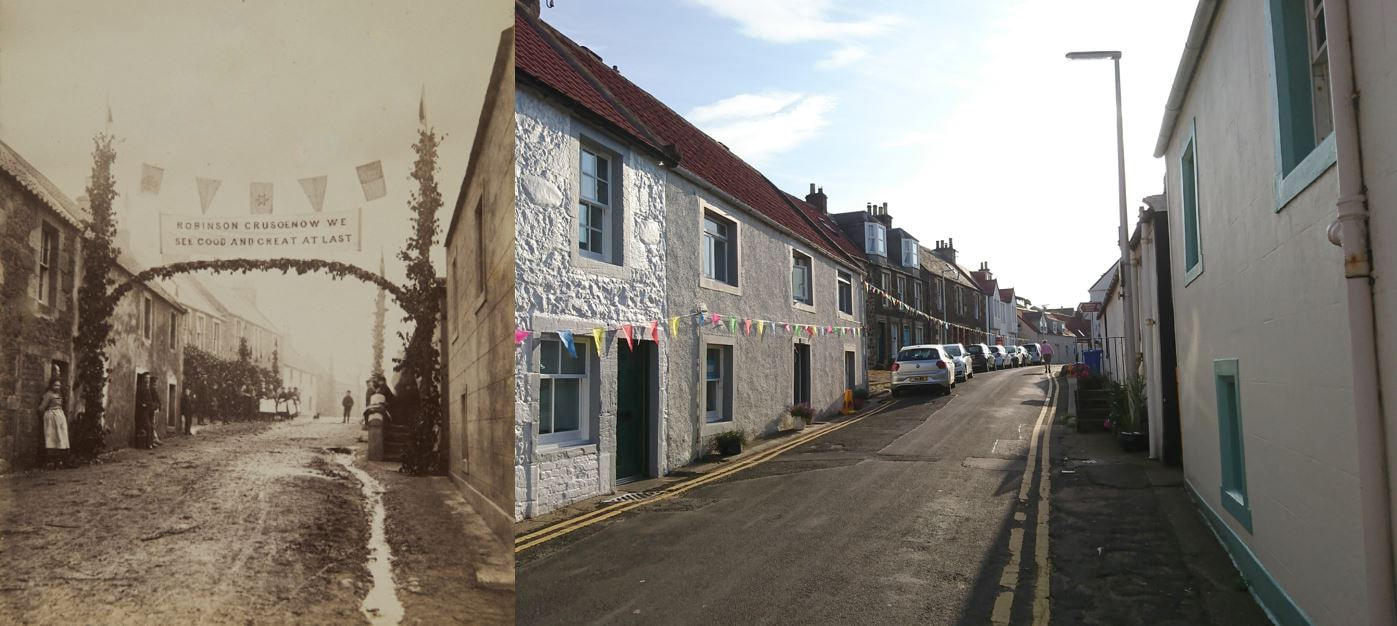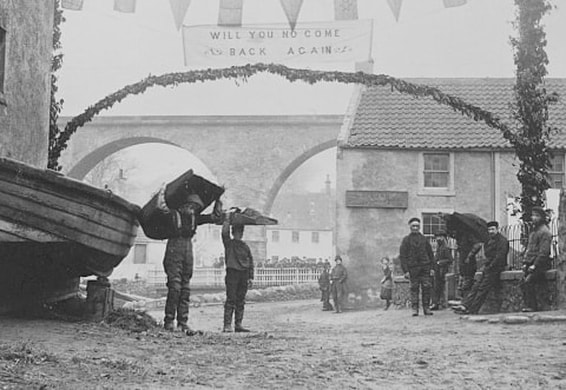Continuing on from the previous post, let's compare the 1885 parade route (on the day of the unveiling of the Robinson Crusoe statue) with the present day equivalent views. Above shows the 'Labour Always Conquers' banner which was situated at Largo St David's Church (seen on the left edge of the images). The buildings on the right (Comely Bank and Balfour Cottage) are unchanged. However, on the left side, after the church, a new addition has appeared since 1885, in the form of 'Downfield'. This building contained five dwellings, three on the ground floor and two on the first floor, and was constructed c1890. Beyond that is Court House, then Doctor's Wynd, Goodsir House and Bonny Bay House and Bakery.
The next arch was sited just before arriving at the statue itself and bore the motto "Robinson Crusoe now we see good and great at last". The images above feature on the left 93-97 Main Street with the Crusoe Buildings beyond. On the extreme right is 'Seabeach' followed by 'Balguthrie'. The evergreen-covered platform can be seen on the centre left of the 1885 photograph. This is where the unveiling ceremony took place and where many speeches were given on 11 December that year.
Moving east beyond the statue, the next arch and banner were positioned just before Cardy House and the tight corner down to Cardy Works. Naturally this one stated "May Cardy Works Flourish". The gate pier of Craigiebank is on the far right with a weaver's cottage beyond. On the left side of the street are the buildings of the former Loomshop Studio and then 'East End Cottages' or 'Braehead' (now known as Cardy Crossing Cottage). The trees behind the wall of Cardy House today look like they could be the original ones seen on the old picture.
Finally, once the ceremony around the unveiling of the Robinson Crusoe statue was complete and the dignitaries were ready to set off back to Largo Station, a final message hung stating "Will you no come back again". This comparison photo is perhaps the view that reflects the most change over time. The boats hauled up on the left hand side are now replaced with cars. The viaduct no longer has railway traffic travelling over it. The mill building seen below the viaduct arch is gone, along with the footbridge seen in front of it in 1885 (crowded with people for the special occasion). The Railway Inn is ever present though and was in the hands of the Bunns in 1885. The whole affair must have been quite a spectacle and wonderful to witness, although strange that a cold and short December day was chosen for such a red letter day for the community.





 RSS Feed
RSS Feed
